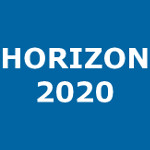Encapsulation of Large-Size Plasmids in PLGA Nanoparticles for Gene Editing: Comparison of Three Different Synthesis Methods
López-Royo, Tresa (Universidad de Zaragoza) ; Sebastián, Víctor (Universidad de Zaragoza) ; Moreno Martínez, Laura (Universidad de Zaragoza) ; Uson, Laura (Universidad de Zaragoza) ; Yus, Cristina (Universidad de Zaragoza) ; Alejo, Teresa (Universidad de Zaragoza) ; Zaragoza, Pilar (Universidad de Zaragoza) ; Osta, Rosario (Universidad de Zaragoza) ; Arruebo, Manuel (Universidad de Zaragoza) ; Manzano, Raquel (Universidad de Zaragoza)
Resumen: The development of new gene-editing technologies has fostered the need for efficient and safe vectors capable of encapsulating large nucleic acids. In this work we evaluate the synthesis of large-size plasmid-loaded PLGA nanoparticles by double emulsion (considering batch ultrasound and microfluidics-assisted methodologies) and magnetic stirring-based nanoprecipitation synthesis methods. For this purpose, we characterized the nanoparticles and compared the results between the different synthesis processes in terms of encapsulation efficiency, morphology, particle size, polydispersity, zeta potential and structural integrity of loaded pDNA. Our results demonstrate particular sensibility of large pDNA for shear and mechanical stress degradation during double emulsion, the nanoprecipitation method being the only one that preserved plasmid integrity. However, plasmid-loaded PLGA nanoparticles synthesized by nanoprecipitation did not show cell expression in vitro, possibly due to the slow release profile observed in our experimental conditions. Strong electrostatic interactions between the large plasmid and the cationic PLGA used for this synthesis may underlie this release kinetics. Overall, none of the methods evaluated satisfied all the requirements for an efficient non-viral vector when applied to large-size plasmid encapsulation. Further optimization or alternative synthesis methods are thus in current need to adapt PLGA nanoparticles as delivery vectors for gene editing therapeutic technologies.
Idioma: Inglés
DOI: 10.3390/nano11102723
Año: 2021
Publicado en: Nanomaterials 11, 10 (2021), 2723 [23 pp.]
ISSN: 2079-4991
Factor impacto JCR: 5.719 (2021)
Categ. JCR: PHYSICS, APPLIED rank: 37 / 161 = 0.23 (2021) - Q1 - T1
Categ. JCR: MATERIALS SCIENCE, MULTIDISCIPLINARY rank: 109 / 344 = 0.317 (2021) - Q2 - T1
Categ. JCR: CHEMISTRY, MULTIDISCIPLINARY rank: 55 / 179 = 0.307 (2021) - Q2 - T1
Categ. JCR: NANOSCIENCE & NANOTECHNOLOGY rank: 53 / 108 = 0.491 (2021) - Q2 - T2
Factor impacto CITESCORE: 6.6 - Chemical Engineering (Q1) - Materials Science (Q1)
Factor impacto SCIMAGO: 0.839 - Materials Science (miscellaneous) (Q1) - Chemical Engineering (miscellaneous) (Q1)
Financiación: info:eu-repo/grantAgreement/ES/FIS-FEDER/PI17-00949
Financiación: info:eu-repo/grantAgreement/EC/H2020/752349 /EU/Nanoparticle-based immunization, a novel therapeutic strategy for amyotrophic lateral sclerosis/NanoALS
Financiación: info:eu-repo/grantAgreement/ES/MCIU/RTI2018-099019-A-I00
Tipo y forma: Artículo (Versión definitiva)
Área (Departamento): Área Genética (Dpto. Anatom.,Embri.Genét.Ani.)
Área (Departamento): Área Ingeniería Química (Dpto. Ing.Quím.Tecnol.Med.Amb.)
Área (Departamento): Área Farmacología (Dpto. Farmac.Fisiol.y Med.L.F.)
 Debe reconocer adecuadamente la autoría, proporcionar un enlace a la licencia e indicar si se han realizado cambios. Puede hacerlo de cualquier manera razonable, pero no de una manera que sugiera que tiene el apoyo del licenciador o lo recibe por el uso que hace.
Debe reconocer adecuadamente la autoría, proporcionar un enlace a la licencia e indicar si se han realizado cambios. Puede hacerlo de cualquier manera razonable, pero no de una manera que sugiera que tiene el apoyo del licenciador o lo recibe por el uso que hace.
Exportado de SIDERAL (2024-01-04-11:06:02)
Visitas y descargas
Idioma: Inglés
DOI: 10.3390/nano11102723
Año: 2021
Publicado en: Nanomaterials 11, 10 (2021), 2723 [23 pp.]
ISSN: 2079-4991
Factor impacto JCR: 5.719 (2021)
Categ. JCR: PHYSICS, APPLIED rank: 37 / 161 = 0.23 (2021) - Q1 - T1
Categ. JCR: MATERIALS SCIENCE, MULTIDISCIPLINARY rank: 109 / 344 = 0.317 (2021) - Q2 - T1
Categ. JCR: CHEMISTRY, MULTIDISCIPLINARY rank: 55 / 179 = 0.307 (2021) - Q2 - T1
Categ. JCR: NANOSCIENCE & NANOTECHNOLOGY rank: 53 / 108 = 0.491 (2021) - Q2 - T2
Factor impacto CITESCORE: 6.6 - Chemical Engineering (Q1) - Materials Science (Q1)
Factor impacto SCIMAGO: 0.839 - Materials Science (miscellaneous) (Q1) - Chemical Engineering (miscellaneous) (Q1)
Financiación: info:eu-repo/grantAgreement/ES/FIS-FEDER/PI17-00949
Financiación: info:eu-repo/grantAgreement/EC/H2020/752349 /EU/Nanoparticle-based immunization, a novel therapeutic strategy for amyotrophic lateral sclerosis/NanoALS
Financiación: info:eu-repo/grantAgreement/ES/MCIU/RTI2018-099019-A-I00
Tipo y forma: Artículo (Versión definitiva)
Área (Departamento): Área Genética (Dpto. Anatom.,Embri.Genét.Ani.)
Área (Departamento): Área Ingeniería Química (Dpto. Ing.Quím.Tecnol.Med.Amb.)
Área (Departamento): Área Farmacología (Dpto. Farmac.Fisiol.y Med.L.F.)
Exportado de SIDERAL (2024-01-04-11:06:02)
Enlace permanente:
Visitas y descargas
Este artículo se encuentra en las siguientes colecciones:
Artículos > Artículos por área > Ingeniería Química
Artículos > Artículos por área > Farmacología
Artículos > Artículos por área > Genética
Registro creado el 2021-11-22, última modificación el 2024-01-04
